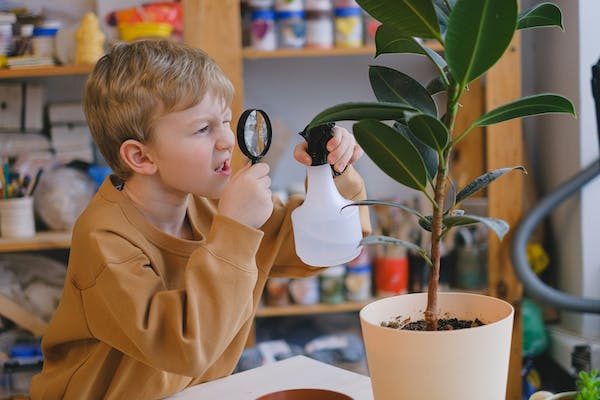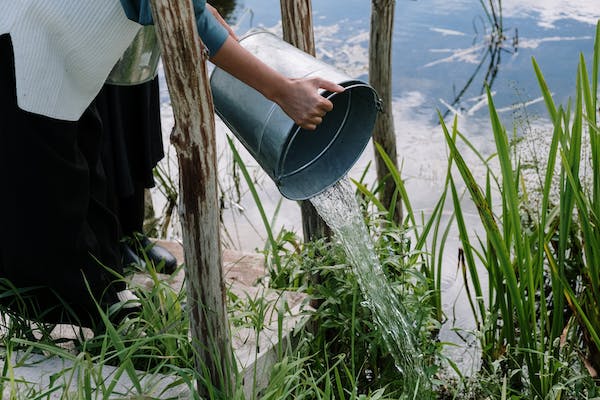Ficus plants are common in many homes across the globe. They are ideal for home staging and as a focal point in a room. They vary in shape and size, with some having tiny weeping green leaves and others having massive Ruby Variegation.
While Ficus trees can be finicky, with the appropriate tips and tactics, they can be a delight to care for!
So, how often should you water them?
5 Methods to Determine When to Water a Ficus Plant
When the Topmost Soil Feels Dry
Measure with the first two joints of your finger when the top two to four inches of soil on your ficus are dry. The more water a plant requires, the larger it is.
In the winter, you will only need to water a little. In the summer, a 12-inch potted plant needs at least 1 to 1.5 quarts of water every week. Consider establishing a watering routine. Certain ficus plants are pickier than others.
When Its Leaves Start Dropping

When your plant starts dropping its leaves on you, that’s fine! Even if it sheds all of the leaves, it’s likely to return to you. Be patient as you work out the best combination for you and the ficus plant.
Transplant your ficus tree in a vase three or four inches wider than the grower’s pot that came with it from the nursery for the highest chance of success. Ensure the bank allows drainage—many gorgeous pots have closed bottoms.
When you can’t see how much water has already accumulated at the bottom of the pot, it’s tough to monitor your watering.
More Light Means More Water.

The amount of light ficus trees receive also affects how frequently they need to be watered. However, they do not want a lot of direct sunlight because it might scorch their leaves, and ficus trees like solid light.
With more light, the plants may support more foliage and grow into lush, lovely little trees; therefore, you should expect to water them more frequently in those conditions.
Ficus trees can grow in low-light and moderate-water-based lighting conditions, but in the latter case, you can expect sparser vegetation that uses less water.
During Periods of Low Humidity
It’s crucial to keep the surrounding air somewhat damp when growing ficus indoors.
The ficus tree can be regularly misted or placed on a marble tray with water to increase humidity, but you should be aware that while they prefer high humidity, plants do not like their roots to be extremely moist. As a result, before watering, always examine the soil’s surface.
Do not water if the soil’s surface is wet, which indicates that the plants have enough moisture. They require water if the soil’s surface seems dry to the touch.
When Applying Fertilizers

Use a water-based, balanced fertilizer. Potted ficus trees don’t consume a lot of food and don’t require a lot of water when applying fertilizers. From late spring until early fall, a monthly fertilizer treatment is all that is needed. As a result, water consumption is reduced.
Because the additional light and moisture will be nourishing and promote growth, moving indoor ficus trees outdoors in warm weather is preferable. But when you move the plants inside again in the fall, be prepared for them to lose their leaves and droop.
What Kind of Liquid Is Ideal for My Ficus Plant?
Watering your ficus with lukewarm rainwater is best. You may also use water from the tap that has been out for a while. Because ficus plants cannot tolerate standing water, check the pitcher or planter 15 minutes after spraying and drain any excess water.
Water less in the winter, but keep the root ball dry. Water carefully, maybe twice a week, with between 1.5 and 2 liters of water for ficus trees grown in the ground.
Disadvantages of Overwatering

Overwatering causes the leaves to become yellow and droop. Soak it thoroughly and allow it to dry before watering again.
The leaves will start to fall if you submerge them. To determine whether it is necessary to water, Pleasant advises tipping the pot and sensing its weight. If it’s incredibly light, it’s probably time to drink. After a few weeks, you’ll get the gist of it.
After watering, empty any water accumulated in the tray below the pot; no plant enjoys wet feet.
Summing Up
It’s crucial to keep the surrounding air somewhat damp when growing ficus indoors.
We advise watering your tree every five to seven days or whenever the top layer of soil is dry. It will require more frequent watering if you choose to grow your plant outdoors as a patio plant.
Yellow leaves may be a sign of excessive or insufficient irrigation. The ficus may require some guessing and experimenting to achieve the best balance.








